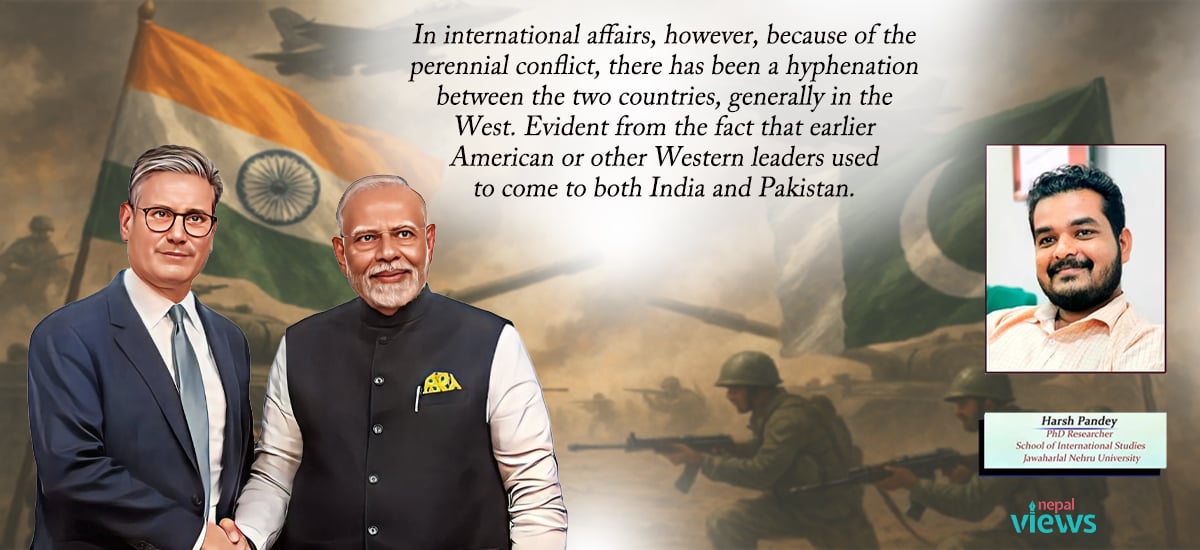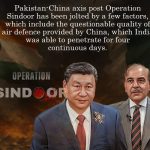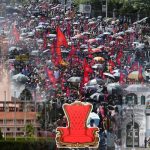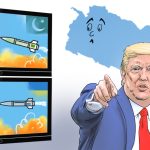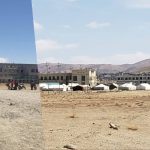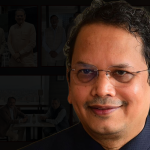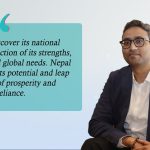After the deadly massacre of Pahalgam, which killed 26 people, 25 Indian and one Nepali citizen, that happened on 22nd April, India has done a series of ‘precision strikes’ inside Pakistan Occupied Kashmir (PoK) and in Pakistan, naming it ‘Operation Sindoor’.
A total of 9 targets were hit on 7th May between 1 and 2 AM. These nine targets were known hideouts of terrorists, including Markaz Subhan Allah, Bahawalpur: The headquarters of Jaish-e-Mohammed (JeM), led by Masood Azhar, located in Pakistan’s Punjab province. Markaz Taiba, Muridke: The headquarters of Lashkar-e-Taiba (LeT), led by Hafiz Saeed, is located near Lahore in Pakistan’s Punjab province. Other targets that were hit by the Indian armed forces in what is being called the first tri-services strike after 1971 include terrorist training and recruitment camps of LeT, JeM, and Hijbul Mujaheddin (HM) in Sarjal/Tehra Kalan, PoK, Markaz Ahle Hadith, Barnala, Bhimber, PoK, Gulpur, PoK, Sawai, PoK, Bilal Camp, and Kotli, PoK.
Amid these recent happenings, escalations, and fog of war looming around the region, there needs to be a revisit to the historical foundation of the nations that were inherited by British India, which includes India, Pakistan, and now Bangladesh. And how the founding fathers of India and Pakistan envisioned their states. It is essential because these national effects and aftereffects are still echoing in the security, politics, and most importantly, raison d’être of both states.
India came out as a secular, democratic, multiethnic union of states with a strong centre but having a federal structure. Pakistan, on the other hand, resorted to being an ethnonational, religious state with a powerful centre where the seeds of democracy were never nurtured. It has paid the price of these tendencies by losing its eastern part, which is nowadays Bangladesh.
Meanwhile, Pakistan has all that it takes to develop itself as a modern nation-state, which includes territory, homogeneity of population, and a common religion. From the late 40s, Pakistan’s founding fathers have constantly tried to develop Pakistan’s myth of origin, not just as a refuge for the Subcontinent’s Muslims but as the harbinger of Islam’s rise and renewal in the 20th century, as argued by Venkat Dhulipala. Nevertheless, from the very beginning, the idea was flawed because a significant population of Muslims remained in India, with political elites of Pakistan bordering the Muslim majority state of Jammu and Kashmir choosing India over Pakistan. Religion as a glueing factor for the nation failed when uprisings and subsequent genocide happened in East Pakistan, creating one of the worst humanitarian crises of modern times, causing India to intervene and liberate East Pakistan, and the birth of Bangladesh as a democratic republic.
Ever since, Pakistan has been searching for a credible story to narrate to the nation and world. Kashmir comes in handy in this case, constantly invoked by its leaders to create a unanimous story of national struggle, creating nationalist rhetoric against India. India, on the other hand, with its fair share of internal problems, tried creating a national story minus Pakistan, which, to a large extent, has been inclusive.
In international affairs, however, because of the perennial conflict, there has been a hyphenation between the two countries, generally in the West. Evident from the fact that earlier American or other Western leaders used to come to both India and Pakistan. India, to its credit, has tried hard to de-hyphenate itself from India as the same was limiting its strategic reach. In the last two decades, owing largely to its economic success, which in turn created a more prosperous society, it has been able to do so.
Pakistan, on the other hand, has been facing many problems domestically, which include separatist movements in Balochistan and Khyber Pakhtunkhwa, a constantly distressed economy, and low democratic credentials. To divert from these ever-existent problems, the Pakistani ‘deep state’ involving its military, ISI, religious clergy, and some political elites, resorts to bringing India into the discourse. The easiest way to do this is to promote terrorism from its soil, which causes harm to multiple lives in India.
BIMSTEC’s Bangkok Summit: A Quiet Revival of Regionalism in the Bay of Bengal
The Pahalgam tragedy was one of these carefully crafted efforts to create communal tensions inside India, as victims were segregated and killed based on religion, as mentioned by India’s Foreign Secretary Vikram Misri in a press conference, following the ‘precision strikes.’ What happened during the press conference is how India is narrating its national story, where a Muslim and a Hindu woman officer led the media briefings—creating a stark contrast from Pakistan, where the masculine, provocative rhetoric of Kashmir as ‘jugular vein’ has been told by Pakistan’s army chief and de facto ruler of the country.
It is ironic to think that on Tuesday, India also concluded a Free Trade Agreement with the United Kingdom (one of many in line with other countries), and it has to deal with unstable borders and a perennial problem that the nation has dealt with since its birth.
(Harsh Pandey is a PhD Candidate at the School of International Studies, JNU, New Delhi. He is also a Life Member of the International Centre for Peace Studies, New Delhi)


